Growing a fresh spring crunch
As the days lengthen and are noticeably warmer, a bowl of soup no longer offers that same seasonal satisfaction. And instead of turning to the freezer or the larder for the next meal, our eyes gaze out upon the garden.
Early spring is often thought of as the ‘hungry gap’ in the garden as the winter crops come to an end and the summer harvest is far from beginning to yield wonderful things to eat. However we are able to satisfy that yearning for a crisp refreshing addition to our diet thanks to wonderful early spring leafy veges.
Spinach
Spinach is just the thing to restore sluggish winter bodies and it prefers the cooler weather of spring or it will bolt and try to set seed in warmer temperatures. It is easy enough to grow from seed and is also quite happy to grow in a container. Seeds will germinate between one and three weeks, and if you can’t wait that long, garden centres have many seedlings to choose from. They like it in full sun, but really don’t mind a bit of shade, especially as the weather heats up. Spinach needs to be kept well-watered and it will also benefit from a nitrogen rich fertiliser every couple of weeks.
Succession planting
The key to a great spinach crop is to choose the right variety for the time of year and plant new seeds or seedlings every three to four weeks to ensure a continual supply into summer. Start out with a winter variety, such as Yates 'Winter Queen' that flourishes in the cool of spring, but once the weather warms up,sow Yates 'Summer Supreme that will perform well during the warmer months. Perpetual Spinach seedlings from the garden centre, which aren’t true spinach but in the beet family, will continue to give leaves that can treated the same way and taste just as wonderful.
Protective measures
Slugs and snails like spinach as much we do, so use your best defences to keep your spinach safe. A heavy frost can also harm tender seedlings, so cloches and frost cloth can come in handy at this time of year.
Lettuce
Surprisingly enough, lettuce and other salad crops also prefer the cool weather of spring. Even though we think mainly of eating them in summer, in spring salad crops really flourish and have the most sweet tender flavours. Growth is so quick that you only need a few plants in the early season to keep you going. As the weather warms up, this prolific growth slows and the plants become quick to bolt so you need to make more frequent succession plantings for a continual supply of delicious salad leaves.
Lettuce tips
- If your garden soil is not well drained plant lettuces in container mix.
- In hot summer weather some afternoon shade is beneficial.
- The faster your lettuces grow, the better they’ll taste. Feed them well and keep them well watered.
- Lettuces will need to be protected from slugs and snails because they love them too.
- Sow more every two weeks for a continuous harvest.
Extra flavour
Rocket and sorrel can be wonderful additions to elevate the flavour of salads to something beyond the ordinary, with the spicy peppery flavour of rocket and the slightly acidic, lemony flavour of sorrel. Sorrel has a long tap root similar to dock and likes a moist rich soil. Rocket should also be kept moist to prevent it from bolting to seed and making the leaves bitter.
Fennel, sown as seed in early spring or planted out as seedlings adds a subtle aniseed flavour and is easy to grow so long as you plant them in rich fertile soil that is free draining.
Even the young bright green leaves of beetroot can give a sweet earthy flavour with a full, satisfying texture. The tender young leaves of kale can also provide that wonderful mouth feel when you know you are eating something that is good for you and tastes great.
Peas are a great option too. That fresh raw crunch can be found in the new shoots and tendrils of newly sprouted pea plants, in an immature pea pod (mangetout), in the sweet round peas of the mature pods, and the full pod of sugarsnap peas. The best way to eat these is right there in the garden.
To top off your fresh spring veges you can’t go past microgreens. These have to be the easiest crop to grow. Sown thickly on seed raising mix in a small container on a sunny windowsill will reward you with a nutrient dense harvest in as little as two to three weeks and in a range of great colours and varieties.
Edible flowers
Nasturtium flowers not only bring vibrant bright colour to lift a salad from shades of green, but offer a piquant flavour. They aren’t too fussy where they grow and will bring the added advantage of being a companion plant that repels some beetles and caterpillars and can draw aphids away from your more desirable plants. Nasturtiums are very vulnerable to frosts so need protecting.
Spring planting
It’s the start of an exciting new planting season, but beware of late frosts! Except in warm northern climates, it’s a few weeks yet before tender crops can be safely planted outdoors. Even without frost, planting too early can set your garden back as transplanted seedlings struggle to bounce into growth in cold damp soil. Generally the last frost is around Labour weekend in late October. But always keep your eye on the weather forecast and have the frost cloth ready for a late unexpected frost.
However, starting seeds in containers on a warm sunny porch or in a greenhouse can be a great head start. By the time the ground warms up in October or early November your seedlings should be ready to plant out.
Sow seed directly into well drained garden soil or outdoor containers filled with fresh planting mix:
Peas, lettuce, rocket, sorrel, silverbeet, spinach, microgreens, beetroot, radish, carrots, parsnip, coriander, parsley, chives, potatoes.
Sow seed in trays or punnets for planting out later:
Broccoli, cabbage, cauliflower, basil, silverbeet, fennel.
Best started in October or early November:
Beans, sweetcorn, NZ spinach, zucchini, cucumber, tomato, chilli, capsicum, pumpkin, melon, eggplant.
The container garden
Spring is a great time to grow veges in large pots and planter boxes. Whether you plant seeds or seedlings, at this time of year they grow faster in warm, well-drained potting mix than in soil that’s still cold and damp from winter. Don’t forget, veges grown in containers need regular watering and feeding.
28-Sep-2023
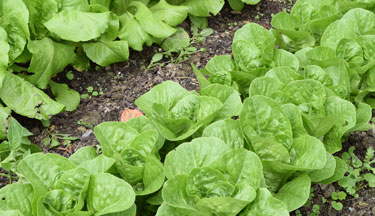
Rows of fresh lettuce
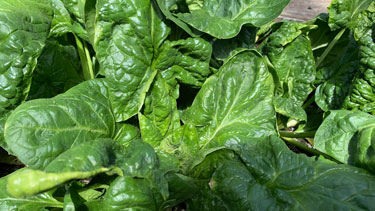
Nutrient rich winter spinach
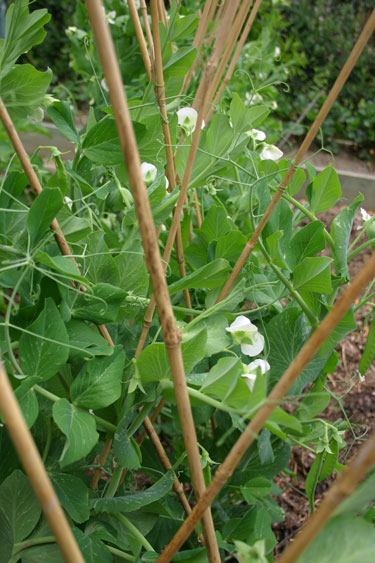
Young peas - shoots and tendrils are edible with a pea flavour.
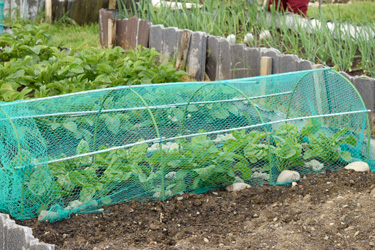
Protect growing spinach seedlings from birds with netting
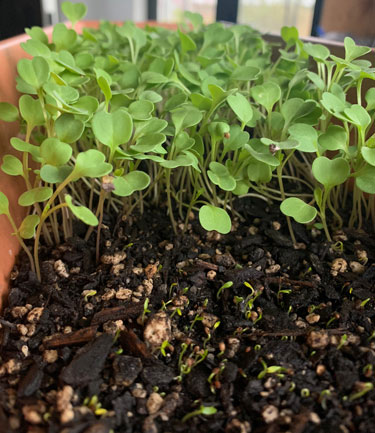
Microgreens grown in a trough that fits a windowsill. Rocket (back)and celery just popping up


